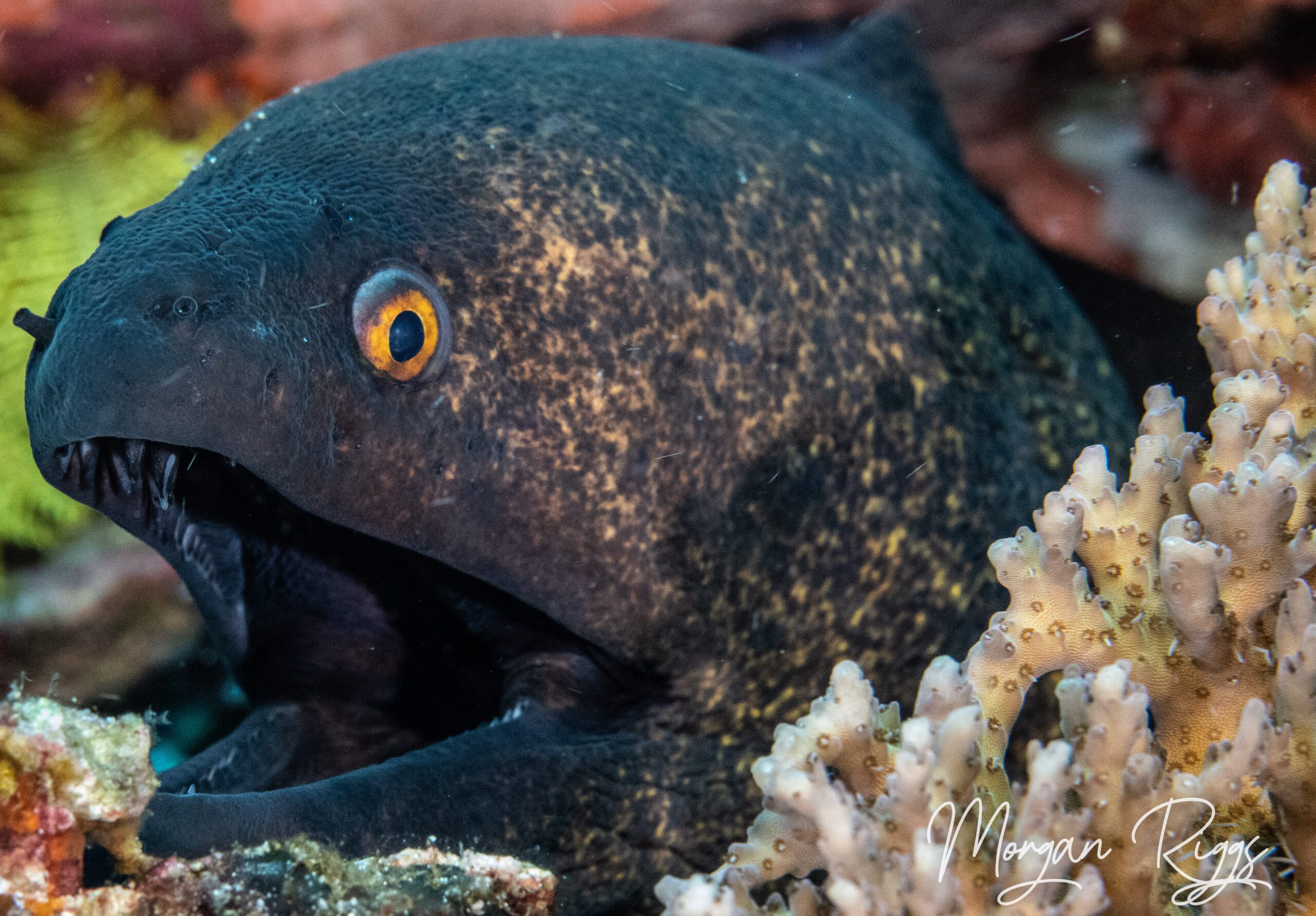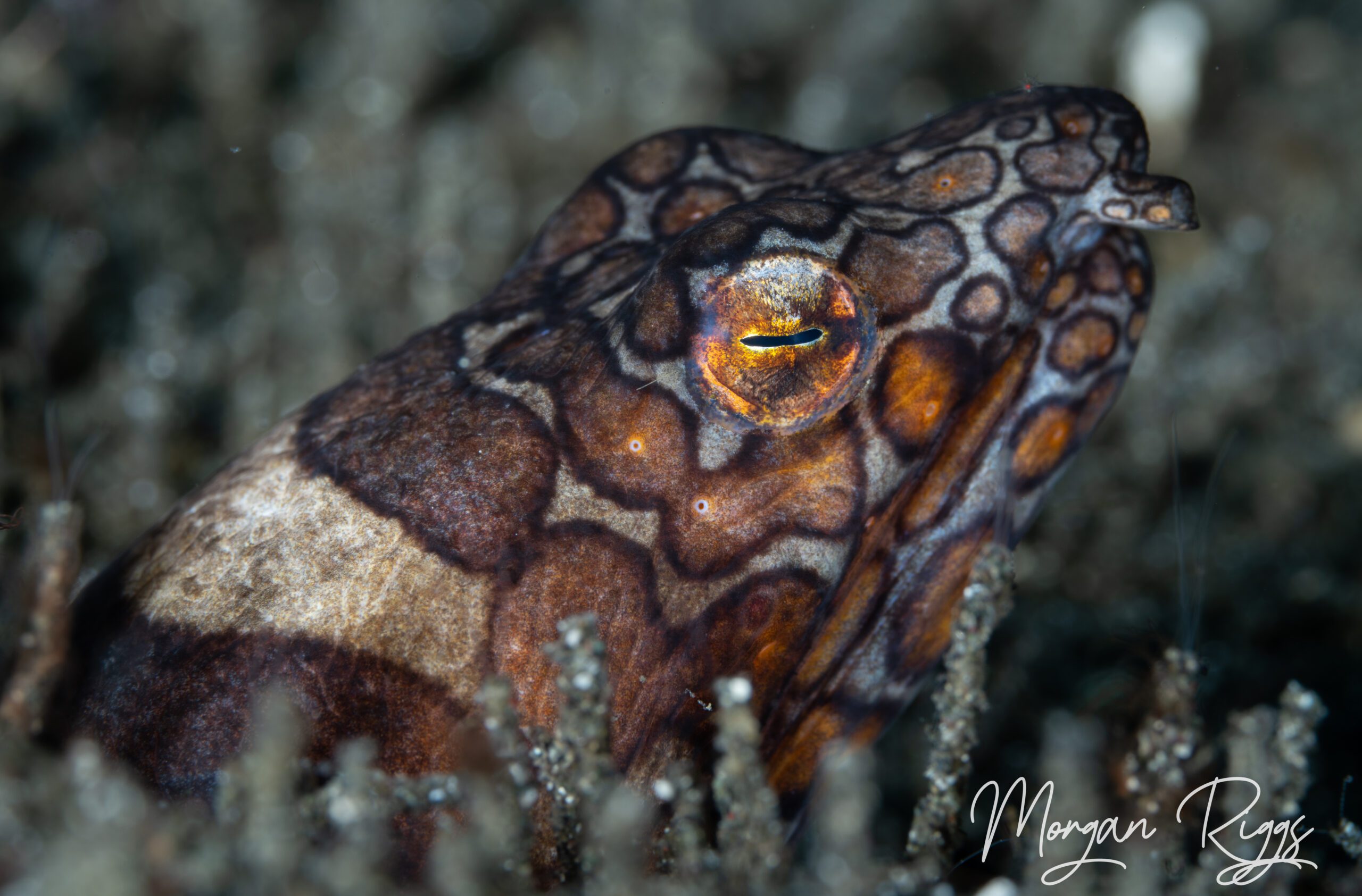Do Eels Have Gills?
|January 4, 2023
Salt water eels such as ribbon eels, and the various species of moray eels, can sometimes appear threatening due to the way they are constantly opening and closing their mouths. Did you know that they are not threatening an attack – they are simply breathing! Read on to find out more…
Let’s start with an introduction to eels. There are about 800 species of eels that belong to eight suborders, 19 families and 111 genera. Some eels are freshwater, some are salt water, and there are a number of species that live in estuaries and will survive well in both salt and freshwater.
Eels are classified as follows:
Ray-finned fish belonging to the order Anguilliformes.
Kingdom: Animalia
Phylum: Chordata
Class: Actinopterygii
Order: Anguilliformes
Body and Habitat
Despite the number of eel species known, they all share common attributes. Eels have a snake or worm-like body which is lacking in pelvic fins, pectoral fins or gill covers. It is this body composition that makes them unique.
Eels and Swimming
Because eels do not have pelvic fins or pectoral fins, they have a highly distinct method of moving through the water. Eels swim through the water by moving their whole body in a wave like motion. This movement is called an undulation. They do possess both dorsal and anal fins which are elongated and are essential to stabilizing the eel as it swims.
How do marine species breathe?
In order for fish to breathe, it’s an automatic reflex – the same as it is for human beings. Most fish do this by constantly opening and closing the bony gill covers which are located on their sides. This reflex action of opening and closing the covers, pumps water over their gills which then extract the oxygen from the water that the animal needs to survive.
How do Eels Breathe Without Gill Covers?
Eels are unique in the marine world as they do not possess gill covers. Therefore, they need to manually force water through their gill systems, and they do this by ‘gulping’ water. This is why eels are often misconceived as threatening or aggressive – in fact they are neither, they are simply breathing! By opening and closing their mouths they are sucking in water to keep their gill systems supplied with the flow of water and oxygen that they need to survive.
Ribbon Eels

One of the most common eels we see in North Sulawesi is the ribbon eel. It is often referred to as the blue, black, or yellow ribbon eel, but did you know they are all the same species but just at different ages? It’s true! The ribbon eel undergoes stunning changes in coloration and even gender during its life cycle:
Stage 1: (Juvenile Ribbon Eels) These are non-gender specific and not sexually active. They are black in color with a yellow dorsal stripe.
Stage 2: (Adult Male Ribbon Eels) This is a bright, almost electric blue eel that maintains the yellow dorsal stripe from its juvenile form. It’s now a sexually active male.
Stage 3: (Mature Female Ribbon Eels) The eel undergoes another color change and becomes fully yellow. This is the female form and the final stage of the eels lifespan.
Moray Eels

In North Sulawesi there are multiple species of moray eels. The most commonly spotted species include the giant moray (Gymnothorax javanicus), snowflake moray (Echidna nebulosa), white-eyed moray (Gymnothorax thyrsoideus), whitemouth moray (Gymnothorax meleagris), yellowmargin moray (Gymnothorax flavimarginatus), fimbriated moray (Gymnothorax fimbriatus) and zebra morays (Gymnomuraena zebra).
Eels and Symbiosis
Some of the best underwater images of moray eels often show an eel that has cleaner shrimps on its body, head, and even in its mouth and around its teeth. These shrimp clean the moray eel of parasites. In return for not being devoured by the eel, they receive a free meal and the eel is cleaned from parasites which could lead to skin infections.
When and Where is the Best Time to See Eels?
Eels of all species can be seen at dive sites throughout North Sulawesi. They are often spotted with their bodies concealed in cracks in the reef, small caves and underneath rocks and ledges. Eels are a very shy species during the day, however, during night dives it is often possible to see them out swimming. The giant moray eel and ribbon eels can grow up to 3 meters in length and are a wonderful sight to see while moving through the water.
Our Murex Dive Guides are experts at finding and identifying the marine life of North Sulawesi and they love sharing their finds with other divers. When you are here in the resort there will always be one of our team available to help you with eel identification and answer any questions.
If you’d like to maximise your North Sulawesi trip why not take a Passport to Paradise and explore three distinct dive destinations (Bunaken –Bangka – Lembeh) in one trip? With over 150 dive sites, 1,500 species of fish – and seamless boat diving transfers from resort to resort it really is the dive trip of a lifetime!
For more information contact our friendly team: reservations@murexresorts.com.
We look forward to welcoming you to North Sulawesi soon.
Did you enjoy reading this blog? You may also like these articles too!
- The Mantis Shrimp – A record Breaking Critter
- Differences Between Hard and Soft Corals
- What is the Difference Between a Dugong and a Manatee
The post Do Eels Have Gills? appeared first on Murex Resorts.
